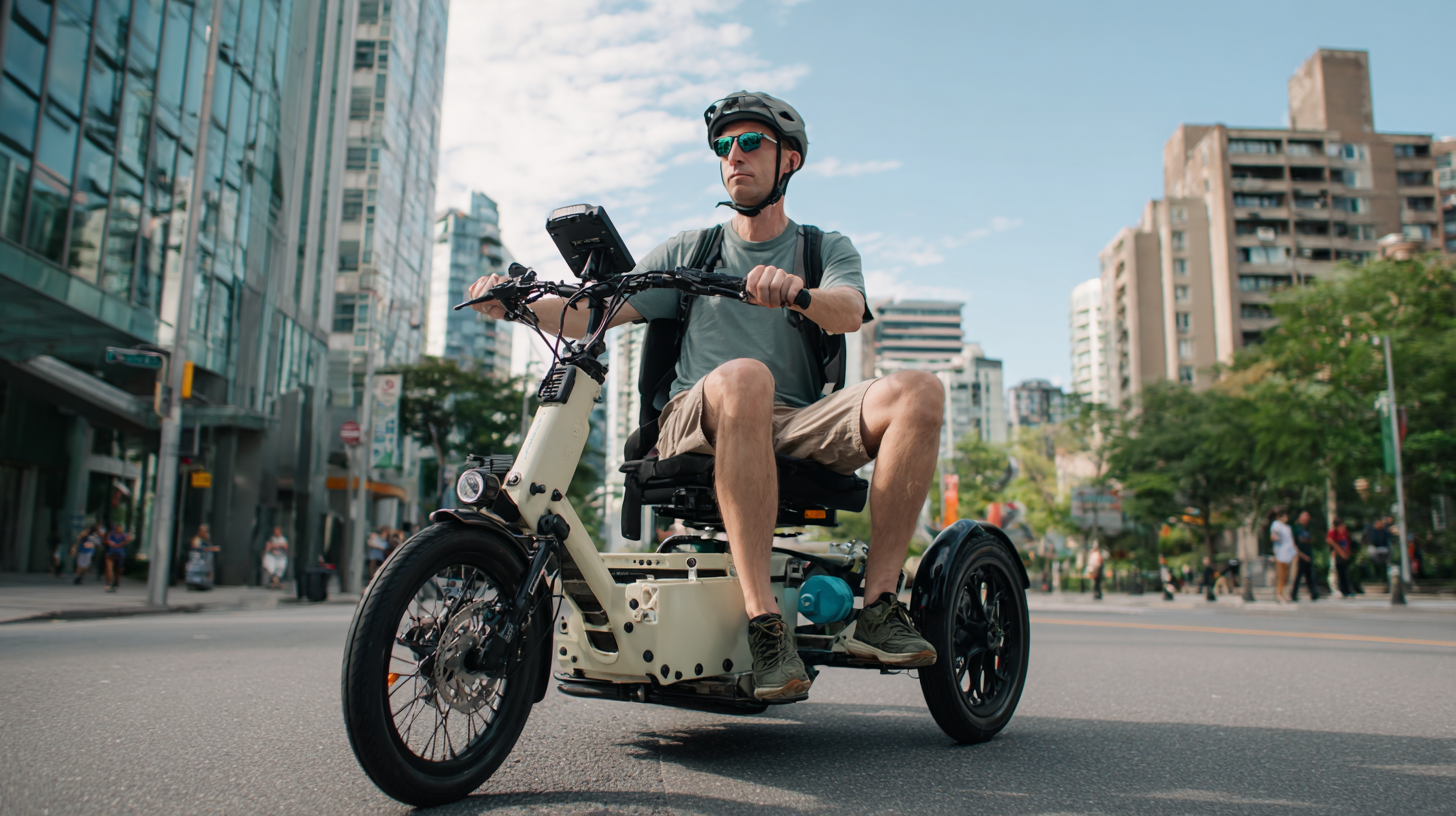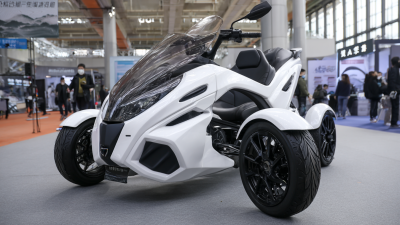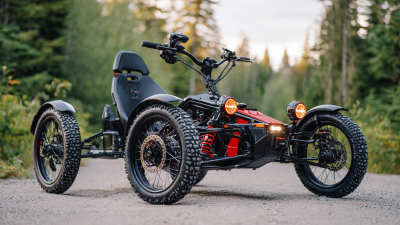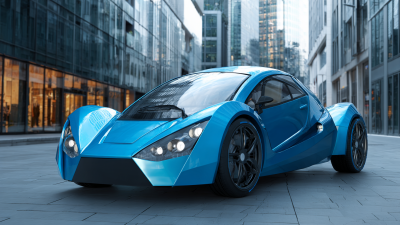The Rise of Small Electric Trikes in Urban Mobility Trends and Their Environmental Impact
 In recent years, the urban mobility landscape has witnessed a significant shift with the rise of Small Electric Trikes, a trend that aligns with the burgeoning demand for sustainable transportation solutions. According to a report by Statista, the global electric trike market is projected to reach approximately $2.6 billion by 2026, driven by increasing urban congestion and a growing awareness of environmental issues.
Small Electric Trikes offer an eco-friendly alternative to traditional vehicles, producing zero emissions and reducing the carbon footprint of urban commuting. Their compact design allows for easy maneuverability in crowded city environments, making them an attractive option for short-distance travel.
With cities aiming to meet stricter environmental regulations and reduce reliance on fossil fuels, the adoption of Small Electric Trikes is not only a response to changing consumer preferences but also a crucial step toward promoting cleaner air and enhancing the overall quality of urban life.
In recent years, the urban mobility landscape has witnessed a significant shift with the rise of Small Electric Trikes, a trend that aligns with the burgeoning demand for sustainable transportation solutions. According to a report by Statista, the global electric trike market is projected to reach approximately $2.6 billion by 2026, driven by increasing urban congestion and a growing awareness of environmental issues.
Small Electric Trikes offer an eco-friendly alternative to traditional vehicles, producing zero emissions and reducing the carbon footprint of urban commuting. Their compact design allows for easy maneuverability in crowded city environments, making them an attractive option for short-distance travel.
With cities aiming to meet stricter environmental regulations and reduce reliance on fossil fuels, the adoption of Small Electric Trikes is not only a response to changing consumer preferences but also a crucial step toward promoting cleaner air and enhancing the overall quality of urban life.
The Growing Popularity of Small Electric Trikes in City Life
As cities continue to evolve and face the challenges of congestion and pollution, the popularity of small electric trikes is steadily increasing. These compact vehicles offer an eco-friendly alternative for urban commuting, combining the convenience of cycling with the ease of electric assistance. Their small size allows riders to navigate through busy streets more efficiently, while the electric motor provides an effortless way to conquer hills and longer distances, making them an appealing option for city dwellers.
Tips for choosing the right electric trike include considering factors such as battery range, weight capacity, and storage options. Ensure that the model you choose fits your daily commuting needs and lifestyle. Additionally, look for features like adjustable seats and suspension systems for enhanced comfort on bumpy city roads.
The rise of small electric trikes is also contributing to a shift in urban mobility trends. With a growing focus on sustainability, many cities are promoting electric vehicles as part of their transport infrastructure. This not only reduces greenhouse gas emissions but also encourages a more active lifestyle among residents. Embracing small electric trikes can significantly impact the overall urban environment, fostering cleaner air and less traffic congestion.

Key Features and Innovations of Modern Electric Trikes
In recent years, modern electric trikes have emerged as a pivotal solution for urban mobility, reflecting the growing demand for environmentally friendly and efficient transportation options. These innovative vehicles are characterized by their lightweight construction, compact design, and enhanced maneuverability, making them ideal for navigating congested city streets. Many electric trikes come equipped with advanced features such as regenerative braking systems, which not only improve energy efficiency but also extend the range by converting kinetic energy back into stored energy.
Furthermore, the incorporation of smart technology has revolutionized the functionality of electric trikes. Features such as GPS navigation, smartphone connectivity, and customizable riding modes allow users to tailor their experiences according to their preferences. Additionally, some models are designed with modular components, enabling easy upgrades and repairs, which can significantly enhance the longevity and adaptability of the vehicle. As cities continue to grapple with traffic congestion and environmental concerns, the key innovations in modern electric trikes position them as a sustainable choice for urban dwellers seeking a reliable means of transport while minimizing their carbon footprint.
The Rise of Small Electric Trikes in Urban Mobility Trends and Their Environmental Impact - Key Features and Innovations of Modern Electric Trikes
| Key Features | Specifications | Environmental Impact | Innovations |
|---|---|---|---|
| Compact Design | Length: 150 cm, Width: 75 cm | Reduces CO2 emissions by up to 80% | Smart Integrated Technology |
| Lightweight Frame | Weight: 35 kg | Improves air quality in urban areas | Mobile App Connectivity |
| Long Battery Life | Range: 50-80 km per charge | Lowers noise pollution | Regenerative Braking System |
| Safety Features | Disc brakes, LED lights | Promotes sustainable transport | GPS Navigation and Tracking |
Environmental Benefits: Reducing Carbon Footprints with Electric Trikes
The rise of small electric trikes in urban mobility not only reflects a shift in transportation preferences but also highlights significant environmental benefits. Reports indicate that electric tricycles can reduce carbon emissions by up to 50% compared to traditional gas-powered vehicles. For instance, cities in regions such as Cross River State are adopting electric tricycles as a part of their commitment to a green economy, highlighting the potential for sustainable public transport solutions.
Additionally, the expanding market for electric bicycles and tricycles suggests that by 2030, around 55% of bicycles sold in Europe will be electric, emphasizing a notable move toward greener transportation modes. As urban areas increasingly grapple with traffic congestion and air pollution, electric trikes emerge as a practical solution, offering a cleaner, healthier alternative for urban mobility. Their lightweight design and efficiency enable better maneuverability in crowded spaces, promoting a reduction in noise pollution and fostering a more livable urban environment.
Comparative Analysis: Electric Trikes vs. Traditional Urban Transport
In recent years, electric trikes have emerged as a compelling alternative to traditional urban transport methods. One significant advantage of electric trikes over cars and buses is their lower environmental footprint. They produce zero emissions during operation, significantly reducing air pollution in densely populated areas. Additionally, electric trikes require less energy and resources to manufacture, making them a more sustainable choice overall. While traditional vehicles often contribute to traffic congestion, electric trikes offer enhanced maneuverability and can easily navigate crowded urban spaces.
Tips: When considering an electric trike for commuting, evaluate the distance of your route and the battery range of the model you choose. It's also advisable to invest in safety gear, such as helmets and reflective clothing, to ensure visibility.
Furthermore, electric trikes can cater to a diverse range of users, from commuters to delivery services, highlighting their versatility. Unlike buses, which follow fixed routes and schedules, trikes allow for flexible travel, enabling users to reach their destinations more efficiently. By comparing the operational costs, electric trikes often prove to be more economical in the long run versus traditional transport, which can incur ongoing fuel and maintenance expenses.
Tips: Consider participating in community test rides to experience different models firsthand before purchasing. This way, you can find the best fit for your urban mobility needs.
Social and Economic Impacts of Embracing Electric Trikes in Urban Areas
As urban areas continue to grapple with traffic congestion and pollution, the adoption of small electric trikes is emerging as a compelling solution. These vehicles not only offer a convenient mode of transportation but also significantly reduce the dependence on traditional cars, which contributes to lowering overall emissions. Embracing electric trikes aligns with sustainability goals, promoting cleaner air and a healthier urban environment.
 The reduced size and electric nature of these trikes make them ideal for navigating crowded city streets, which can lead to a decrease in overall vehicular traffic volume.
The reduced size and electric nature of these trikes make them ideal for navigating crowded city streets, which can lead to a decrease in overall vehicular traffic volume.
The social and economic impacts of integrating electric trikes into urban mobility should not be overlooked. By providing an affordable and accessible means of transportation, electric trikes empower individuals, particularly those in lower-income brackets, to engage more fully with their communities. Furthermore, the growth of this sector can stimulate job creation, from manufacturing and sales to maintenance and rental services. As cities invest in infrastructure to support electric trikes, such as dedicated lanes and charging stations, they also enhance public space and mobility options, fostering a more inclusive urban fabric that encourages eco-friendly transport choices.
Related Posts
-

How to Choose the Right Electric Trike for Adults
-

Exploring the Future of Adult Trikes Electric at the 138th China Import and Export Fair in 2025
-

Exploring the Benefits of Front Wheel Trikes: Enhancing Balance and Mobility for All Ages
-

7 Secrets to Choose the Best Charging Battery Car
-

Exploring the Rise of Tricycle For Women at 2025 China's 138th Canton Fair
-

How to Choose the Best Electric Solo Car for Your Lifestyle







